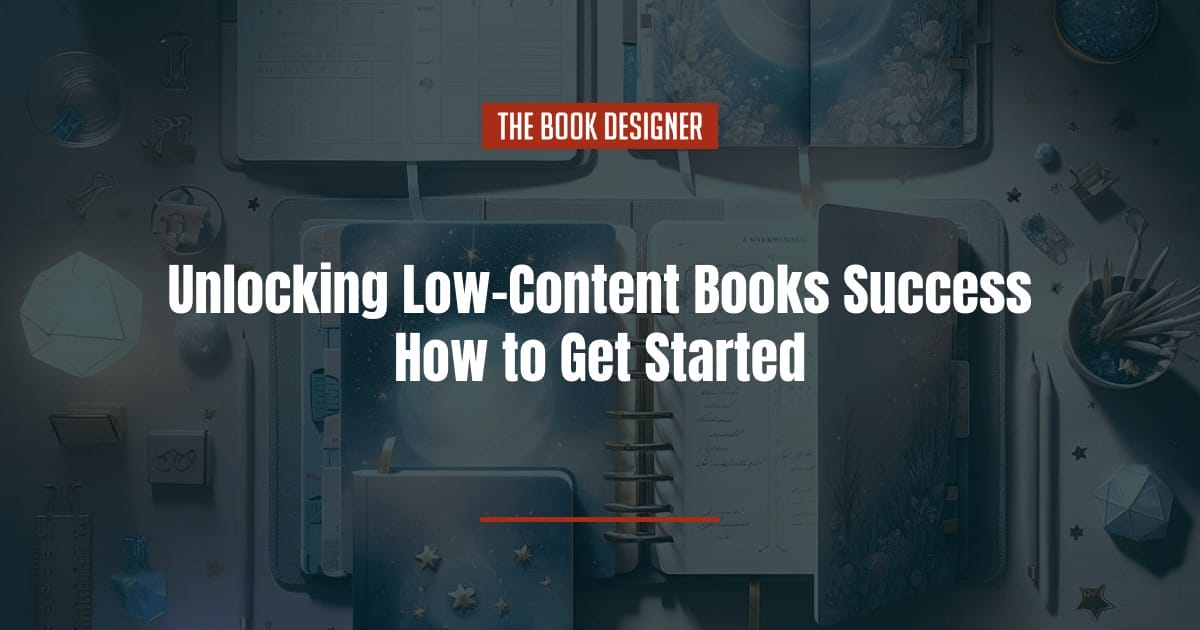Does writing a book always equal needing to produce hundreds of pages of text? Not necessarily. You can share your experience and practical advice by creating low-content books (LCB).
Low-content books are publications with little to no written content, which encourage user interaction. For example, coloring books, journals, planners, puzzle books, calendars, and guest books are all low-content books.
Who should consider publishing low-content books? People with expertise or a strong interest in a topic. This can be experts in a certain field, coaches, educators, or successful entrepreneurs.
Besides sharing your experience, low-content books can help promote your business and monetize your expertise. In this article, we’ll cover:
In this article, we’ll cover how low-content books can help promote your business and monetize your expertise:
Types of Low-Content Books
While there are many types of low-content books, the kinds to best share your knowledge are:
- journals
- workbooks
- habit trackers
- planners
Let’s have a look at each type.
Journals
In the context of low-content books, journals are semi-structured books that help readers document their thoughts and ideas. As an author, your job is to guide people’s creative process without restricting it.
A great example of a guided journal is 642 Things to Write About, which offers 642 thought-provoking writing prompts. A writing community created this journal to inspire and motivate writers of all levels to explore their creativity.
Workbooks
Workbooks are similar to journals in the way the author guides the reader. In the case of workbooks, the goal isn’t reflection but rather learning and sharpening a skill.
For example, The Pen and Ink Drawing Workbook by Alphonso A. Dunn guides readers through the basics of drawing. It offers step-by-step tutorials, exercises, and practical tips to help users develop their skills.
Habit trackers
Unlike workbooks, habit trackers don’t teach skills but help establish habits. They usually include habit-tracking templates, goal-setting sections, motivational prompts, and habit-related insights.
As an example, we can take James Clear. Clear is the author of a bestselling book, “Atomic Habits,” about the science of habit formation (and a great cover design). He collaborated with a stationery brand and released a companion habit tracker to help users build habits and track progress.
Planners
Planners are structured notebooks designed to help users organize their time and set goals. They often come with templates, calendars, and sections for goal setting, task lists, and habit tracking. Creating a planner is a great way for a highly effective individual to share their time management system.
The Full Focus Planner is a productivity-focused daily planner designed by Michael Hyatt. It helps users set and achieve their goals. It’s a notebook with a clear layout, which includes weekly and quarterly review templates, daily task lists, and a daily framework. The planner is aimed at people who want to improve their productivity.
How to Choose the Type of Low-Content Book You Want to Write
So, you have decided that you are ready to share your knowledge in a book form. But how do you choose the best book for your goal?
You need to determine your target audience and what exactly you want to help them do. If you want to make people think and help make their creative juices flow, consider creating a journal. An author can offer a creative writing notebook; a motivational speaker can create a positivity notebook; a business leader can publish a journal focusing on productivity.
If you want to teach a particular skill, a workbook is the best tool. For example, an artist can create a workbook for developing drawing techniques or color theory. If you are a life coach, share your personal growth and goal achievement exercises. Financial advisors can create workbooks for budgeting or debt reduction strategies.
Do you want to help your readers establish new healthy habits or kick the old ones? A habit tracker is an obvious choice for any coach—health, productivity, wellness, or career. If you have your program, such a habit tracker can be a perfect companion to help your members achieve their goals.
A planner is a perfect book to share your time management or planning systems. This can be a good choice for business strategists, time-management coaches, event planners, or project managers.
This is a partial list of low-content book ideas. If you are good at something—be it financial management or pebble-throwing—you can create a low-content book about it.
How to Design Your Low-Content Book
In low-content books (LCBs), design is just as crucial as content. There are several ways to go around it.
First, you can start with the DIY approach. Online platforms like Canva provide user-friendly interfaces and plenty of low-content book templates. You can use the templates as a foundation to add your professional flare.
Collaboration or hiring a designer may be the best path if design isn’t your forte. A professional designer can translate your vision into a tangible product. They can also ensure that every page aligns with your branding and communicates the intended message.
In either case, it’s crucial to start with a clear concept. Even if you plan to hire a designer, drafting your ideas using basic templates can help you explain your vision. This preparation ensures that the result’s final product—whether a planner, journal, or workbook—provides real value to your readers.
Final Thoughts
Low-content books (LCBs) are an alternative to traditional books to share your knowledge. Such books don’t need hundreds of pages filled with text—instead, they encourage interaction and simplicity.
Beyond knowledge sharing, low-content books can serve practical purposes, such as promoting your business or generating income. With accessible platforms like Kindle Direct Publishing (KDP), publishing has never been easier.
You can choose from different types of low-content books—each suitable for sharing a certain kind of insights. To get started, decide what you want to share, define your goal, and choose your audience.



